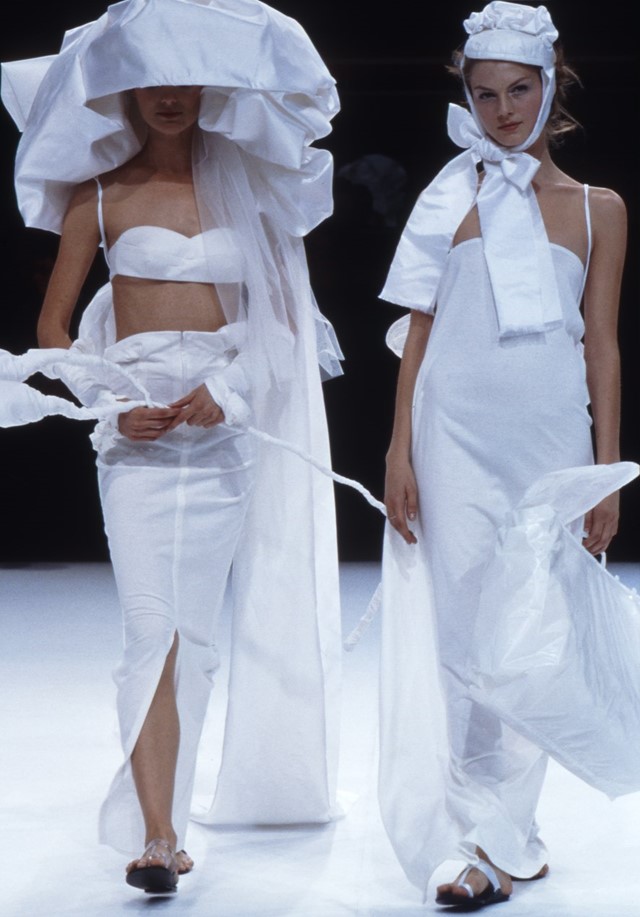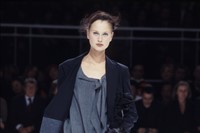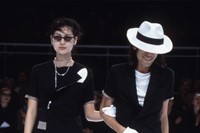We explore the haunting beauty and wonderful wit of Yamamoto's S/S99 wedding-themed runway
Tim Blanks called it “one of the most enchanting fashion shows I’ve ever seen”, and Suzy Menkes termed it the “zenith” of his career. Yohji Yamamoto’s S/S99 collection was one that brought audience members to tears as they simultaneously delighted in its wonderful irreverence; a show that combined the spectacle of fashion with the ritual pageantry of a wedding. With gender roles both celebrated and subverted, the formality of a wedding swiftly transformed into a coquettish explosion of joy, it was simultaneously romantically ethereal and charged with subtext; the embodiment of a designer who consistently brings a cerebral beauty to the runway. Here, we examine what made it just so special.
The Show
With “Here Comes The Bride” playing in the background, a veiled model in a white two-piece suit opened a sequence of breathtakingly beautiful bridal adaptations. In a 1985 interview with Yvonne Baby, Yamamoto explained, “The playful dimension of fashion is very important” and, in 1998, it was the combination of the playful with the exquisite tailoring and drapery that Yamamoto handles with such grace that created the effect. From crinolines and top hats, white shirts and black trouser suits to ballooning strapless gowns, it was an a poetic examination of every element of western nuptial dress through a wonderfully witty lens.
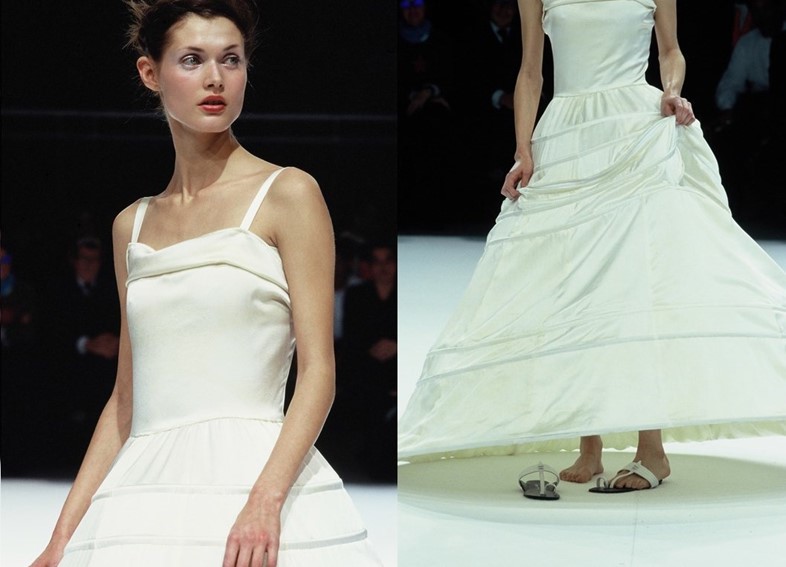
However, far from the pristine, stiff and glistening white of the traditional wedding outfit, the fabrics themselves felt well-worn, floating upon the bodies that modelled them. As Susannah Frankel explains in her biography of the designer, “Yohji’s fabrics were deliberately aged, worn even: in this instance the shock of the new lay in the fact that his work did not actually look new at all. Instead, it appeared imbued with history and hidden meaning.” And the show was drenched with this meaning, with the subversion of the ritual convention and formalities of fashion, of womanhood and of the cermony of weddings. As the show progressed, models started to fling off the gloves that concealed their hands, use tissues pulled from bodices to wipe their mouths, even unzip the white pockets on their crinoline hoop skirts to reveal a practical bridal kit, including flat shoes and a bouquet. As Tim Blanks said, “As the show went on, it got more and more and more delightful. It took the audience somewhere; people were gasping and cheering. The things that happened to the clothing were just magical.”
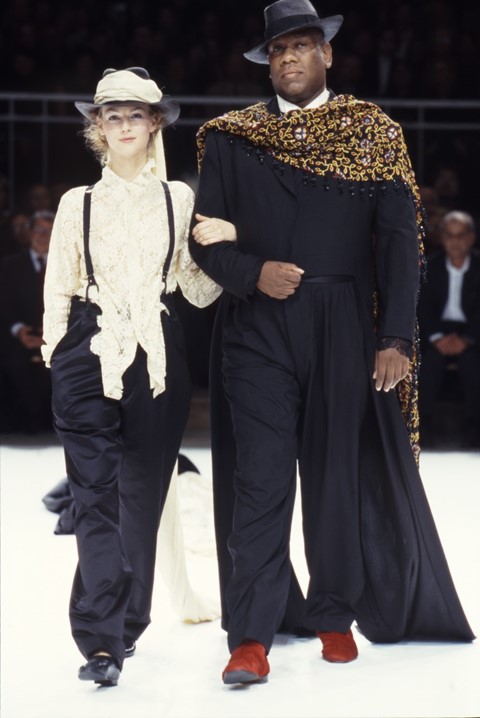
The People
Malgosia Bela was a picture of traditionally doe-eyed bridal innocence – before she popped on the shoes, chiffon robe and hat that were concealed within the folds of her dress. Shalom Harlow (who, in the same season, was the centrepiece for Alexander McQueen’s industrial graffiti-art show), said that it was “one of my all time favourite shows... I think there was beauty and poetic sadness and laughter and humour.” Vogue’s Editor-at-Large André Leon Talley walked down the aisle to “Je T’Aime” with a stoic expression and a model who can’t help but smile.
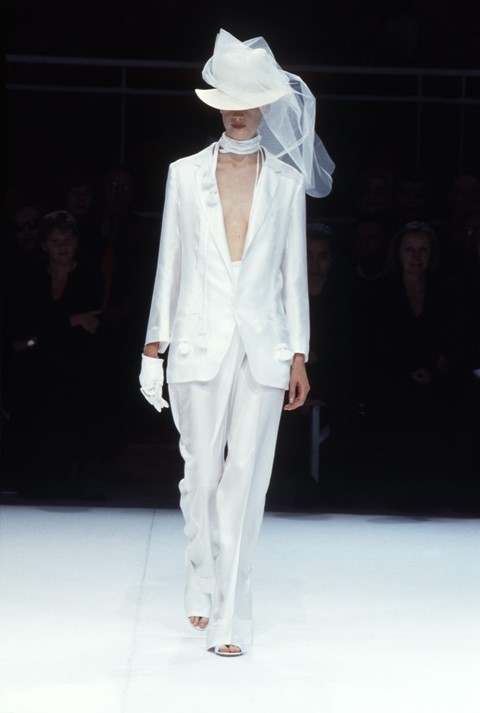
The Impact
“In my philosophy, the word androgyny doesn’t have any meaning. I think there is no difference between men and women. We are different in body, but sense, spirit and soul are the same,” stated Yamamoto, and the continual exploration of feminine and masculine conventions are a thread that has been interwoven through his career. During a time where gender binaries are being deconstructed everywhere from Prada to Hood By Air, Selfridges to Gucci, Yamamoto still remains at the forefront of the movement, examining and subverting with both nuance and beauty. His legacy informs an understanding of the codes and rituals that can be explored through fashion, the idea that a serious assessment of societal norms can be performed with the charm and wit that was seen in S/S99.
